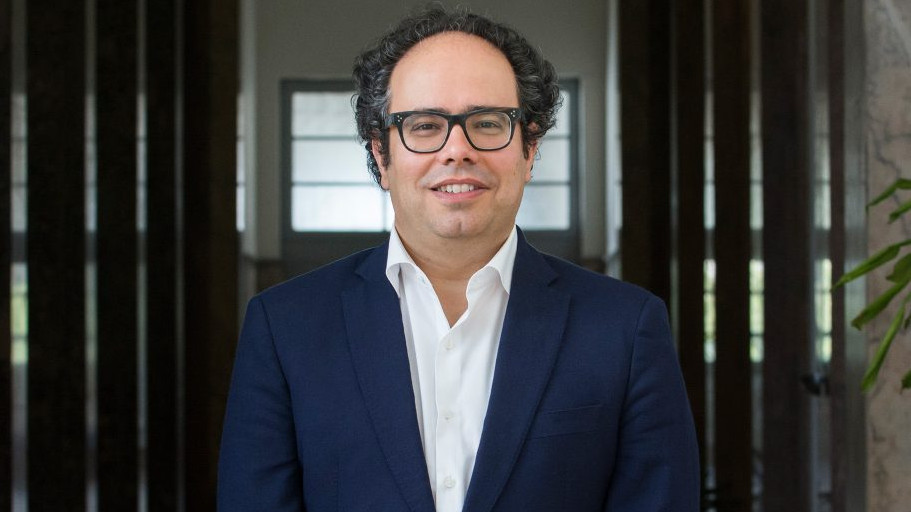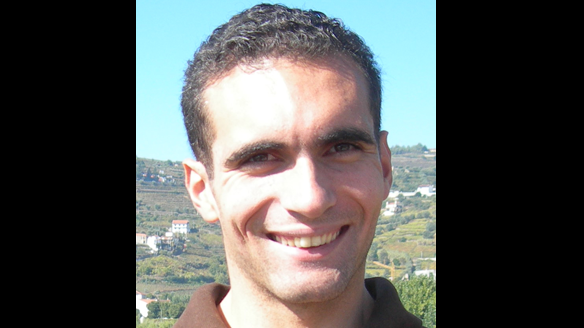Newsfrom our faculty members and students

Rogério Jorge awarded for his PhD thesis
August 04 2020APPLAuSE student Rogério Jorge was awarded one of the European Physical Society (EPS) Plasma Physics Division PhD Research Award of its 2020 edition. The prize recognizes truly outstanding research achievements associated with a PhD study in the broad field of plasma physics. Up to four prizes are given annually to young scientists from the 38 European countries associated with the EPS.
Rogério’s thesis is entitled “A moment-based model for plasma dynamics at arbitrary collisionality” and was supervised by Prof. Paolo Ricci (Swiss Plasma Center, EPFL) and Prof. Nuno Loureiro (currently at MIT, formerly at Department of Phyics/IST), in the scope of a joint PhD degree between EPFL and IST. At the end of 2019, Rogério had already been awarded the EPFL Physics Doctoral Thesis Award for his work.
He worked on one of the most important issues faced by the fusion community, namely the understanding of the plasma turbulent dynamics in the tokamak edge, where the plasma temperature decreases from values as high as ten times the temperature in the core of the Sun to the room temperature of the wall. He provided a seminal contribution to the development of a model that will allow the numerical simulation of this challenging region.
Within APPLAuSE, Rogério was a member and the delegate of the 2015-2019 class. He pursued the Bachelor and Master's in Engineering Physics at IST, and his joint PhD was a continuation of the Master's Thesis work developed at EPFL with the title 'Simulation of Plasma Blobs in Realistic Tokamak Geometry', a collaboration between IPFN and CRPP. At EPFL, Rogério distinguished himself as a teacher and was also a very active representative of the Physics PhD students, one of the main organizers of the first EPFL Physics Days, and heavily involved in the discussion of the organization of the teaching assistantship. His research interests besides Nuclear Fusion includes the Study of Meyers-Perry Black Holes and Physics of Music – Non-linear Acoustics.
After his PhD he moved to the USA, where he is now a postdoctoral associate at the University of Maryland’s Institute for Research in Electronics and Applied Physics.
Congratulations Rogério !

Professor Luís Oliveira e Silva elected correspondent member of the Lisbon Academy of Sciences
December 08 2019Luís Oliveira e Silva, professor at the Department of Physics and member of the Scientific Domain of Plasmas, Lasers and Nuclear Fusion, was elected correspondent member of the Lisbon Academy of Sciences. The election took place on December 5, during the meeting of the Physics class.
The correspondent members of each class are nominated by the effective members of their class, anytime there is a vacancy. The nominees are then presented to the suffrage. In order to be elected, it is necessary an absolute majority of effective members. Some duties of a correspondent member are: attendance at plenary sessions and class sessions to which they belong; participation in the works of the Academy, performing the functions to which they have been designated or elected by deliberation of the Academy or the class to which they belong; and the presentation of communications, reports, proposals, projects and work suggestions.
“I am deeply honoured to be a member of the Academy. Many intellectuals I admire are part of the Academy, including distinguished Técnico professors such as professor Alfredo Bensaude, Técnico's first director", says professsor Luís Oliveira e Silva. “I hope I will live up to the trust placed in me and to work towards the Academy mission”.

Professor Hugo Terças hired as Assistant Researcher in Individual call to Scientific Employment Stimulus 2018
November 28 2019Professor Hugo Terças has been hired as Assistant Researcher in the Individual call to Scientific Employment Stimulus 2018.
His research project is focused on "Exploiting quantum turbulence in low dimensional quantum matter: applications in quantum technologies".
Quantum turbulence in low-dimension quantum matter, such as ultracold gases and plasmonic materials, significantly differs with its three dimensional counterpart. Due to dimensionality constraints, the system tends to develop topological defects. While direct numerical calculations of quantum fluids reveals interesting aspects of turbulence, a ab initio, comprehensive theoretical framework still lacks. What is the microscopic mechanism leading to the energy cascades in soliton turbulence? And how vortex clusters are indeed formed?
Hugo Terças' hypothesis is that fully-developed strong turbulence in low-dimensional quantum matter (in opposition to the regime of weak, wave turbulence) may be treated as a statistical mechanics problem of topological defects. This means that the establishment of a kinetic theory of soliton (1-d) and vortex (2-d) gases may reveal the microscopic origin of turbulent features, such as direct and inverse energy cascades. We suspect that with such a kinetic theory in hand, we may be able to effectively describe strong turbulence as a weak turbulence of topological gases, an idea that is physically simple but technically sophisticated. Applications in quantum technologies involving the turbulent response of atoms one-dimensional Bose-Einstein condensates, or solid-state plasmas in carbon nanotubes and graphene (or other 2D materials) may be expected.

Professor Luís Oliveira e Silva elected fellow of the European Academy of Sciences
November 21 2019Luís Oliveira e Silva, professor at the Department of Physics and member of the Scientific Domain of Plasmas, Lasers and Nuclear Fusion, was recently elected fellow of the European Academy of Sciences (EurASc). Luís Silva is the first Portuguese to be part of the Physics division and the sixth Portuguese to join the prestigious academy. This election make us proud !
The European Academy of Sciences is a fully independent international association of distinguished scholars that aims to recognise and elect to its membership the best European scientists with a vision for Europe as a whole, transcending national borders, and with the aims of strengthening European science and scientific cooperation. Another objective is to take advantage of the expertise of its members in advising other European bodies for the betterment of European research, technological application and social development.
The election of EurASc fellows begins with a proposal by the Scientific Committees, which is duly subject to the approval of the General Board – composed of Presidium Members and Heads of Divisions. EURASC is completely independent of any national entity, in its membership, election processes, deliberations and actions.
The appointment is based solely on the relevance of scientific contributions, on the reach and impact of published articles and on the scientific curriculum.
“I am very grateful to the European Academy of Sciences for this recognition, to the members of my team and my research group, GoLP, and to IPFN and Técnico colleagues for all their support and collaboration: without them I wouldn’t be able to develop my research work”, says professor Luís Oliveira e Silva.

Professor Jorge Vieira hired as Assistant Professor
August 02 2019As of September 2019, Professor Jorge Vieira has been hired as Assistant Professor of Physics. Professor Jorge Vieira was previously an "Investigador FCT". His research is focused on advanced computing and theoretical modelling to exploit the properties of structured, intense light and to attain the ultimate physical limits of plasma accelerators and associated light sources, envisioning beam phase spaces tailored for specific applications. View more
